Known as a national symbol of Japan, Mount Fuji rises above the plains of central Honshu as one of the most dramatic mountains in the world. It’s the country’s highest peak, and it’s near-perfect conical shape rises more than 12,000 feet above sea level, meaning you can see it from as far as Tokyo. Mount Fuji, Japan, is a volcano, and not an extinct one — just a dormant one, though it hasn’t erupted since the 18th century.
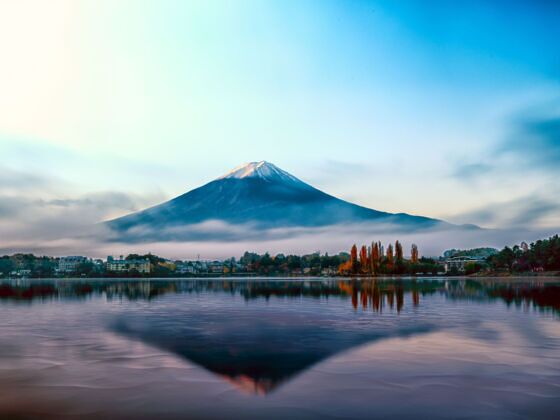

A First-Timer's Guide to Visiting Mount Fuji, Japan
Visiting Mount Fuji is quite easy if you’re already in Japan, as it’s only a few hours via a high-speed Shinkanesen trains from major cities like Kyoto and Tokyo. It’s certainly possible to hike Mount Fuji, but many more visitors head to the towns around Fuji’s Five Lakes region just for views of Mount Fuji — though the luxury ryokans, lakeside hikes, and nearby onsen (natural hot springs) are certainly compelling reasons to visit, too.
If you’ve never been to Mount Fuji, Japan, it can be hard to figure out exactly where to go, what to do, and when to visit. Here’s what to know for planning your trip, whether you plan to hike to the top (tip: as of May 2024, you may need a reservation) or want to take the easier way up via the Kachi Kachi ropeway.
-
Jump to:
- Where is Mount Fuji?
- How to get to Mount Fuji from Tokyo
- How tall is Mount Fuji in Japan?
- How did Mount Fuji form?
- Climbing and hiking Mount Fuji
- About the Kachi Kachi Ropeway
- History and legends of Mount Fuji
- When to visit Mount Fuji
- Where to stay near Mount Fuji
Where is Mount Fuji?
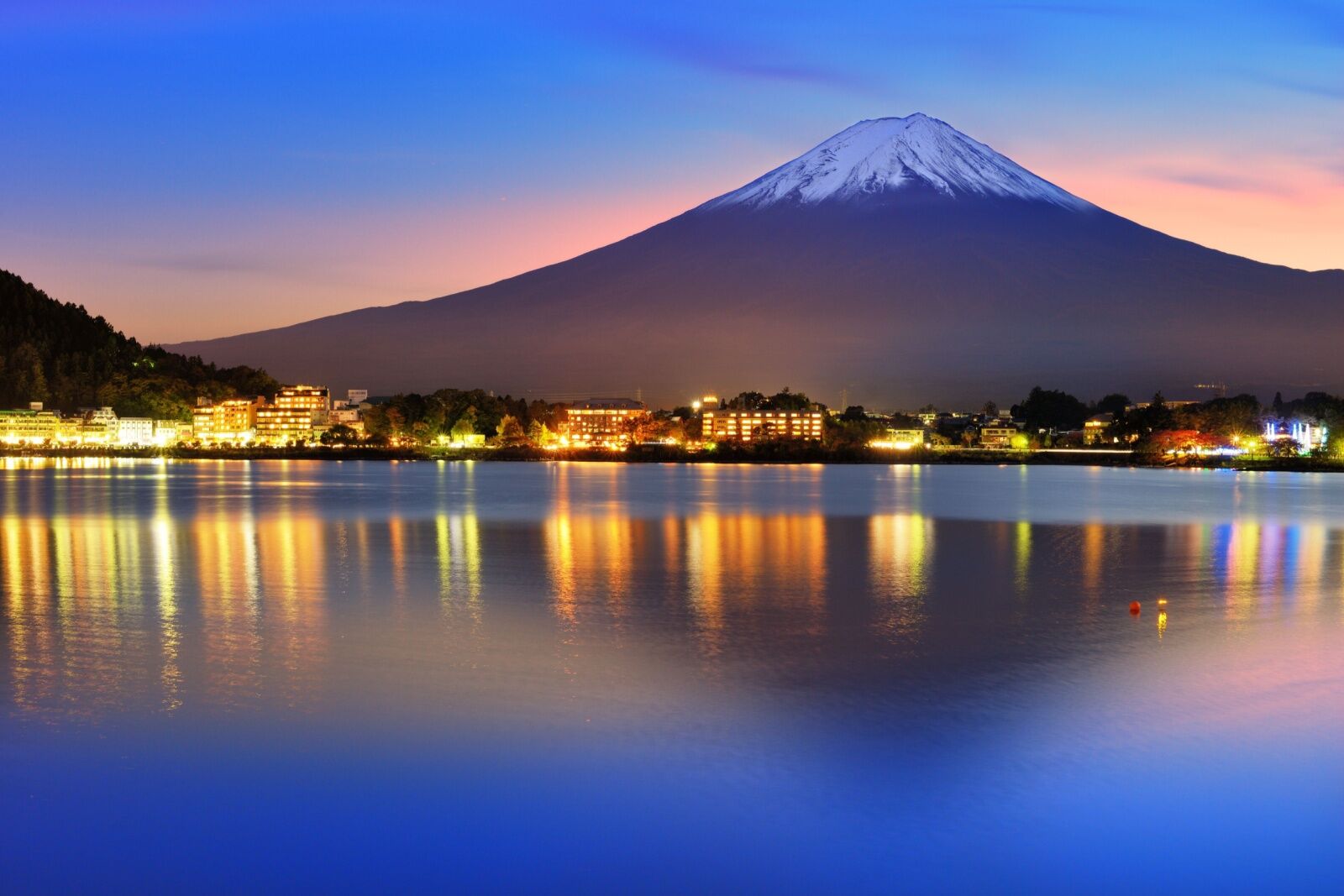
Photo: Sean Pavone/Shutterstock
Mount Fuji, also known as Fuji-san in Japanese, is in Japan, on the main island of Honshu. It’s between the Shizuoka and Yamanashi prefectures and is the highest mountain in Japan. Mount Fuji isn’t one town, exactly, but it’s very close to Fujikawaguchiko, which is where most people stay when visiting. Though it is a tall mountain, it’s actually about 2.5 hours south of the “Japanese Alps,” where you’ll find the popular ski resort areas around Hakuba and Nagano. It’s relatively central for most tourists visiting Japan and is easy to add on for a few days as part of a longer trip through the country.
The area around Mount Fuji is part of Fuji-Hakone-Izu National Park, so Mount Fuji isn’t the only outdoor draw in the area. By the way, Fujikawaguchiko is also sometimes just called Kawaguchiko. So don’t panic — they’re the same place.
How to get to Mount Fuji from Tokyo or Kyoto
Getting to Mount Fuji from Tokyo is relatively straightforward, and there are several transportation options available. For most people, taking the train is the best bet, as it’s less work than renting a car. From Tokyo’s Shinjuku Station, you can take the Fuji Express Train, which makes stops at the Kawaguchiko station, and other area stations. It only runs twice a day, however, so you’ll need to plan your schedule accordingly.
If that doesn’t work with your schedule, you can still get there with just one transfer. From Tokyo, head to Otsuki Station, then take the Fujikyuko Line Local toward Mount Fuji Station in Fujikawaguchiko. Depending on your connections, the trip takes between two and 2.5 hours. Note that the second train isn’t part of the JR Line, so you’ll need to buy a separate ticket. It’s 1400 Yen, or about $7.50. There’s also a direct bus that runs between Tokyo and Mount Fuji. Without traffic, it also takes about two hours.
Mount Fuji, Japan, is actually fairly easy to reach from Kyoto, as well. The very quickest way is to take the bullet train from Tokyo, then follow the instructions above. However, you can also take a train from Kyoto Station to Shin-Fuji Station, a roughly 2.5-hour trip. Either stay in the area around the Shin-Fuji station in the town of Fujinomiya, or take the bus from Fujinomiya to Fujikawaguchiko.
How tall is Mount Fuji in Japan?

The Chureito Pagoda in Fujiyoshida. Photo: Sean Pavone/Shutterstock
Mount Fuji, the highest mountain in Japan, stands at an elevation of 12,389 feet (3,776 meters) above sea level. You can see it from as far away as Tokyo on a very clear day.
If you want to do the iconic Mount Fuji, Japan, hike, you don’t have to cover quite that much elevation gain, however. One of the most popular trails to the summit is the Yoshida Trail, which is 8.5 miles long and gains about 4,800 feet of elevation as it starts halfway up the mountains. If you want really excellent views of Mount Fuji (which you won’t get while you’re on Mount Fuji), consider trekking to the summit of Mitsutoge, which gains 4,100 feet of elevation and is totally doable as a day hike.
Is Mount Fuji a volcano? How was Mount Fuji formed?
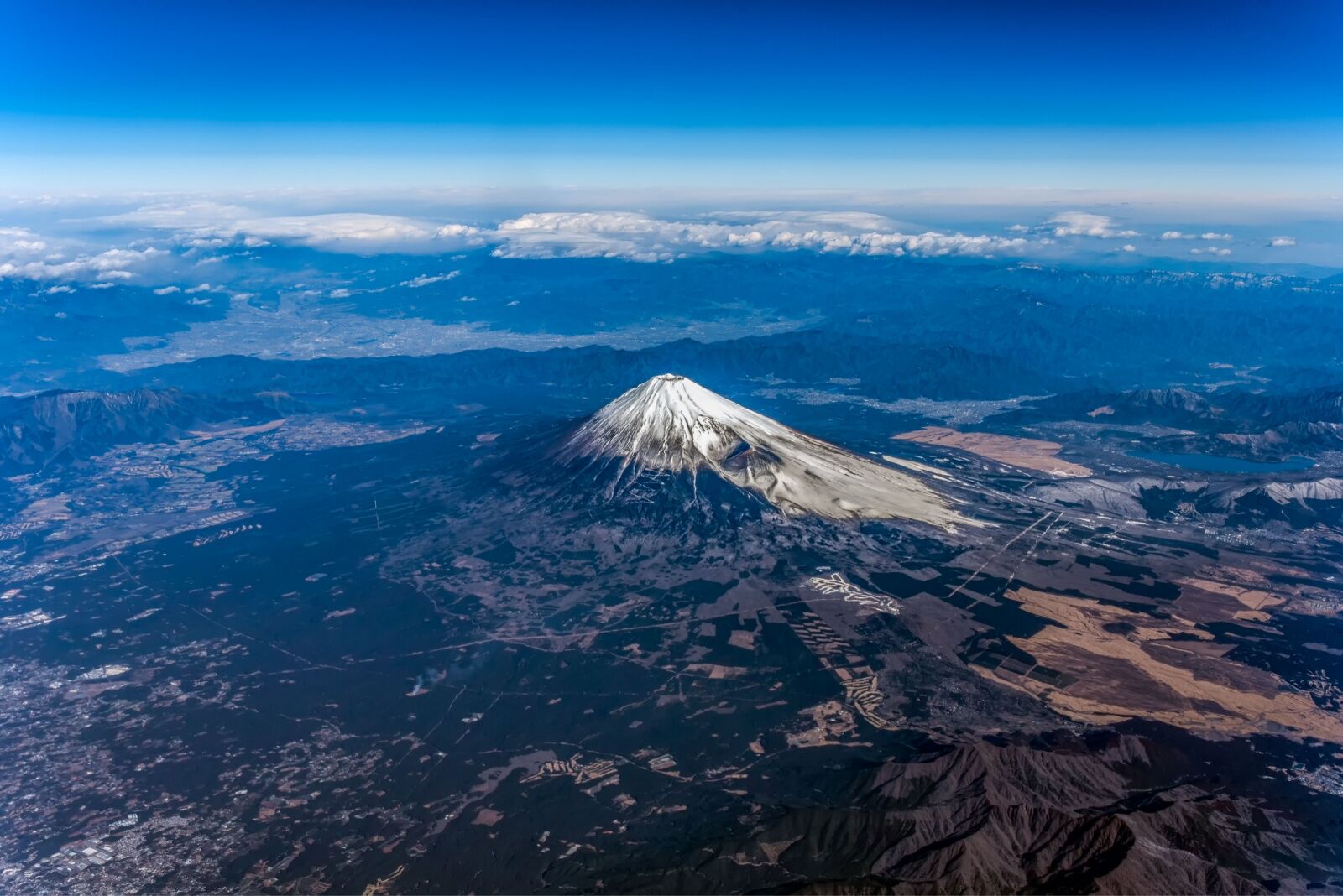
Photo: Hit1912/Shutterstock
Mount Fuji is indeed a volcano — a stratovolcano, to be specific. It was formed when the Pacific Plate subducted beneath the Philippine Sea Plate. That makes it part of the “Ring of Fire,” a geologically active ring that more or less encircles the Pacific Ocean.
When the plates began to overlap, magma gets pushed to the surface, pushed toward the surface. That gave Mount Fuji its steep, conical shape, which is characteristic of stratovolcanoes. Mount Fuji is still active and has experienced both explosive and effusive eruptions. The most recent documented eruption occurred in 1707 during Japan’s Edo period and was called the Hoei Eruption. It lasted about 2.5 months and deposited ash as far as modern-day Tokyo.
Fortunately, scientists are always monitoring Fuji’s volcanic activity, and there’s plenty of notice (and safety and evacuations measures in place) if the ground starts to move. So pay attention to any of the very rare alerts that may be issued while you’re on the mountain, and you’ll be just fine.
Can you climb Mount Fuji?
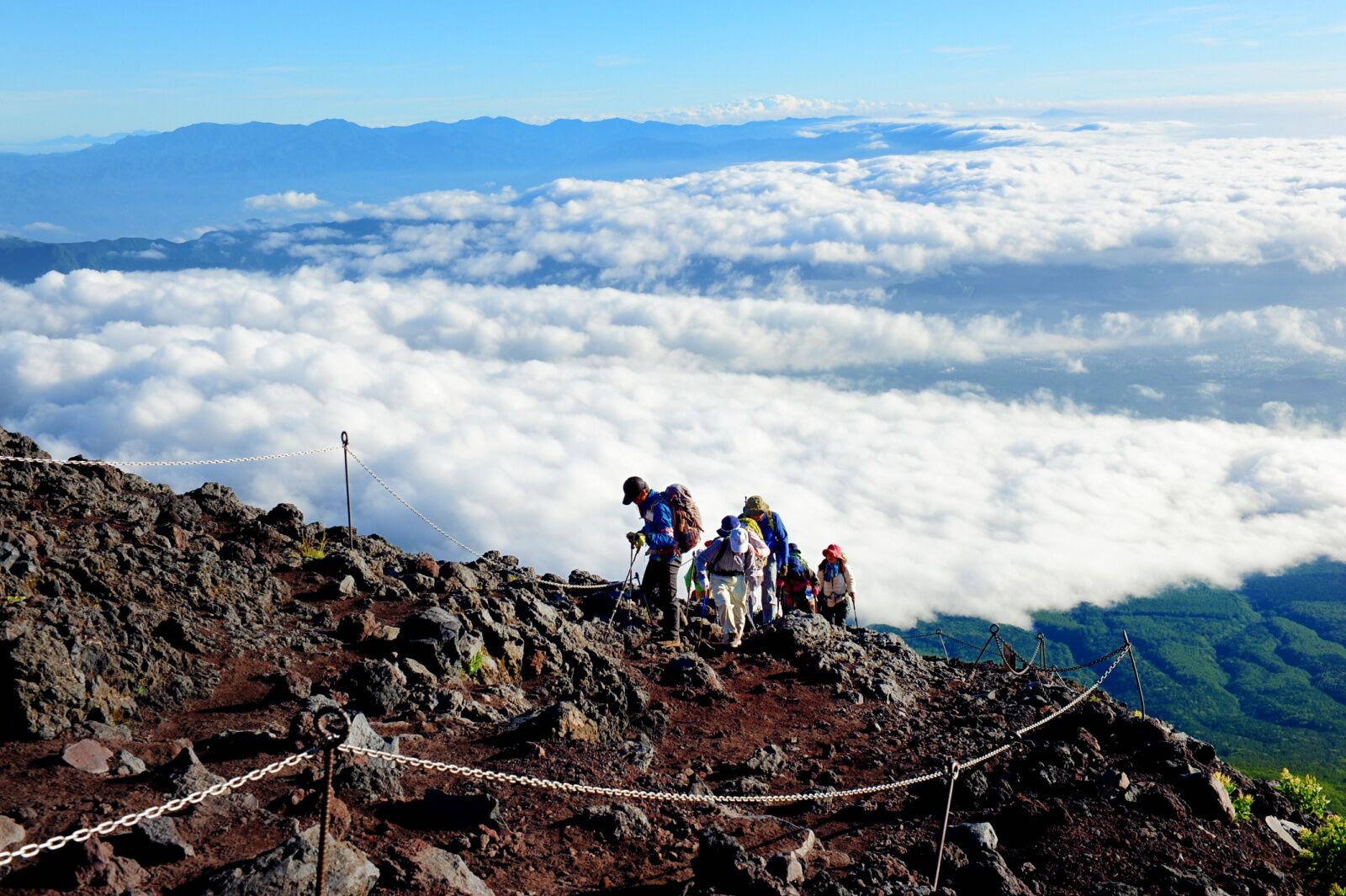
Photo: Jamoo/Shutterstock
Yes, you can climb Mount Fuji, Japan. (People say “climb,” but they mean hike, by the way. Not rock climbing).
New hiking regulations and reservations were introduced in May 2024. Now, to hike Mount Fuji, you’ll need to pay a $13 fee to the Yamanashi prefectural government. It’s part of an ongoing bid to combat overtourism around Mount Fuji, which saw more than five million climbers in 2019 (before the COVID-19 pandemic). Other efforts include limiting the number of climbers allowed via the popular Yoshida Trail to 4,000 per day, and not allowing anyone to start hiking between 4 PM and 3 AM in an attempt to reduce overcrowding at the summit around sunrise. There’s an exception if you have a hut reservation, though they still recommend you start before 4 PM.
Reservations aren’t technically required, but it’s recommended to make them in advance if you’re able. Reservations can be made online via the official climbing website and are separate from any on-mountain hut or lodging reservations. If you made a hiking reservation, you’ll be able to move through a speedier line at the gate at the start of the trail near the Fuji Subaru Line 5th Station. If you don’t have a reservation, you can pay when you go through, but the line will probably be longer and slower.
Mount Fuji’s hiking season runs from late June to to mid-September, when the weather is generally warm and snow at higher elevations is mostly melted. There are several routes to the summit ranging from five to about 17 miles long. Of these, the Yoshida Trail is the most accessible and popular. The main hike doesn’t require any mountaineering or technical skills, but it has a lot of elevation gain, so you want to be in relatively good hiking shape. Expect cold temperatures and variable terrain, ranging from muddy to rocky to loose.
You can do it as a day hike or overnight, and can use a guide or go on your own. If you do it as an overnight, book your hut reservations in advance. You can also rent hiking gear, sleeping bags, tents, and whatever else you may need from outfitters like Fuji Mountain Guides or Kobe Mountain Rentals. If you plan a day hike, make sure to train in advance. They’re pretty big hikes and you want to be fit with significant hiking experience if you’re not spending the night.
How to take the Mount Fuji Panoramic Ropeway
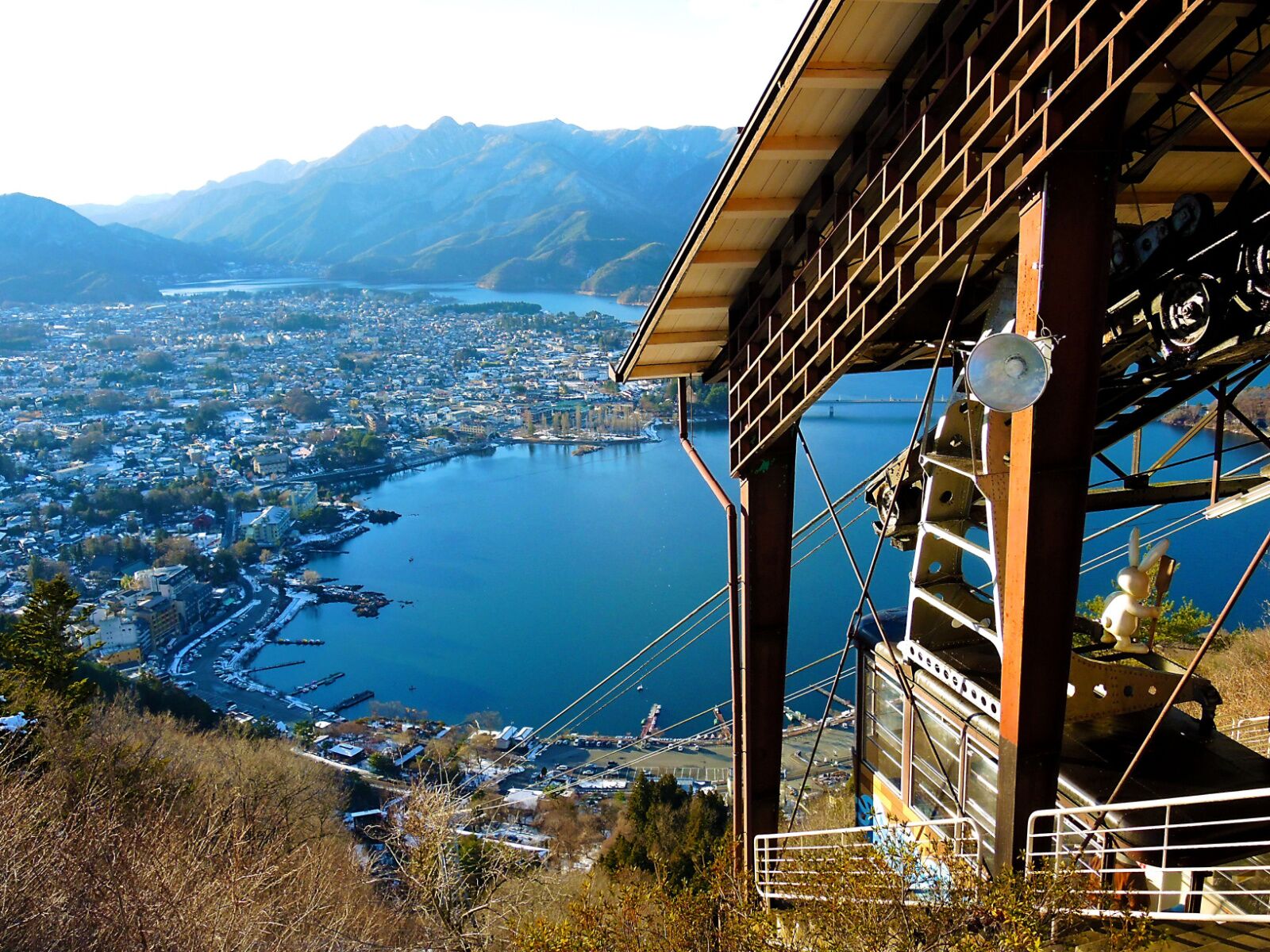
Photo: Arunee H/Shutterstock
The Mount Fuji Panormaic Ropeway is also called the Kachi Kachi ropeway. It’s a cable car system north of Mount Fuji in the town of Fujikawaguchiko, next to Lake Kawaguchi. The ropeway ride lasts about five minutes and takes riders to a station near the top of Mount Tenjō. There are great views on the way up, as well as from the top (provided Mount Fuji isn’t shrouded in fog, which can happen fairly often in winter).
There are also a few hiking trails from the summit, all of which are well-marked and signed with information on the environment and local stories about the region. Adult tickets are 900 Yen (about $6) for a round-trip ride, or 1600 Yen (about $11) for a combined tour that also includes a boat tour on the lake. The ropeway is open year-round, though it may close temporarily in case of inclement weather like snow.
History and legends of Mount Fuji
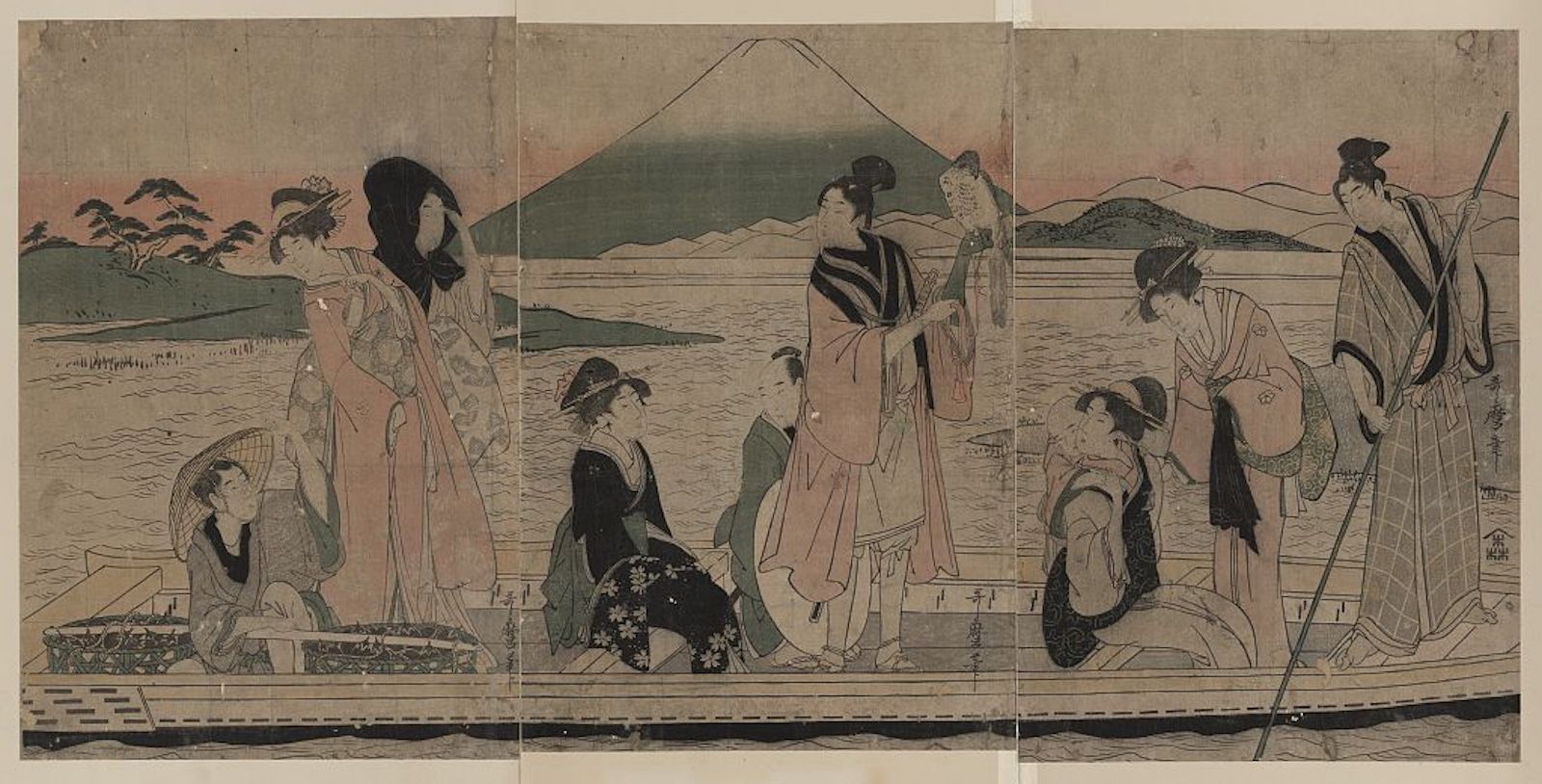
A historical Japanese woodcut circa 1798 to 1801. Photo: Library of Congress
Mount Fuji holds a special place in Japanese culture and folklore, and several legends and myths are associated with the iconic mountain. Some Japanese legends say that Mount Fuji was created in an earthquake in a single day. Other legends revolve around Princess Konohanasakuya, the goddess of Mount Fuji and cherry blossoms, who supposedly trapped herself in a fireproof box in the volcano to prove her virtue to her jealous husband. There’s also a legend that Mount Fuji is named after the fire goddess, who would get jealous of any woman who tried to climb the mountain. And in fact, it wasn’t until 1833 that a female hiker reached the summit.
Visitors interested in the history and legends of Mount Fuji, Japan, should visit the Mount Fuji World Heritage Center, opened in 2017.
Visitors who take the ropeway should keep an eye out for the Tenjō Bell, a heart-shaped bell with views of Mount Fuji. Ring it alone, and you’ll have good luck in your life. Ring it with your partner or family for good health and continued happiness. The ropeway also has many statues and signs telling the story of the raccoon dog and the rabbit, a famous story in Japan that supposedly took place on Mount Tenjō.
When to visit Mount Fuji
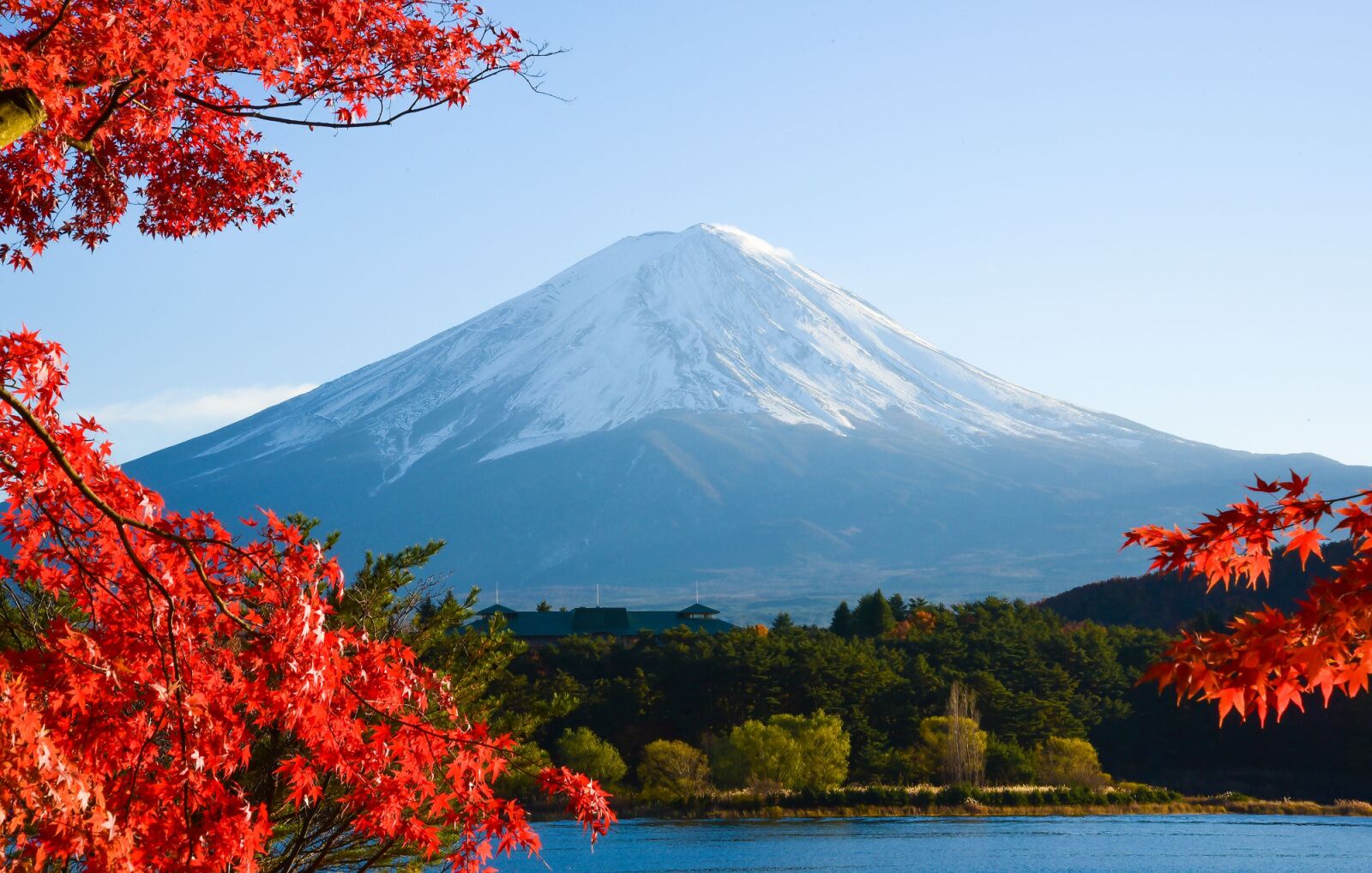
Photo: FocusStalker/Shutterstock
You can visit Mount Fuji and area towns year-round, so the best time to go really just depends on what you want to do.
Mid-March to early April is cherry blossom season: If you want to combine your visit to Mount Fuji with the beauty of these blooming trees, late March to early April is the best time to head to Mount Fuji. Cherry blossom season is the same in Kyoto and Tokyo, though those two towns are likely to be very crowded during that time. The weather can be brisk or quite warm — it’s a bit of a toss-up. Hotels can also be pricey.
Late June to September is climbing season: The official climbing season typically runs from early July to mid-September. The weather is at its warmest and most snow has melted. Keep in mind that this is also the busiest time, so accommodations and trails can be crowded.
September to early November is foliage season: Another visually stunning time to visit Mount Fuji is during the autumn foliage season. The surrounding forests and lakes turn into a beautiful tapestry of reds, oranges, and yellows, creating a striking contrast against the mountain’s silhouette. It’s an ideal time for lower-elevation hikes and photography.
December to February is winter: If you prefer a quieter and more serene experience, visiting Mount Fuji during the winter months can be enchanting. The mountain is often capped with snow, and the surrounding areas are peaceful and quiet, though many restaurants and hotels may be temporarily closed. Expect chilly weather and potentially ice and snow around the ropeway.
Where to stay around Mount Fuji
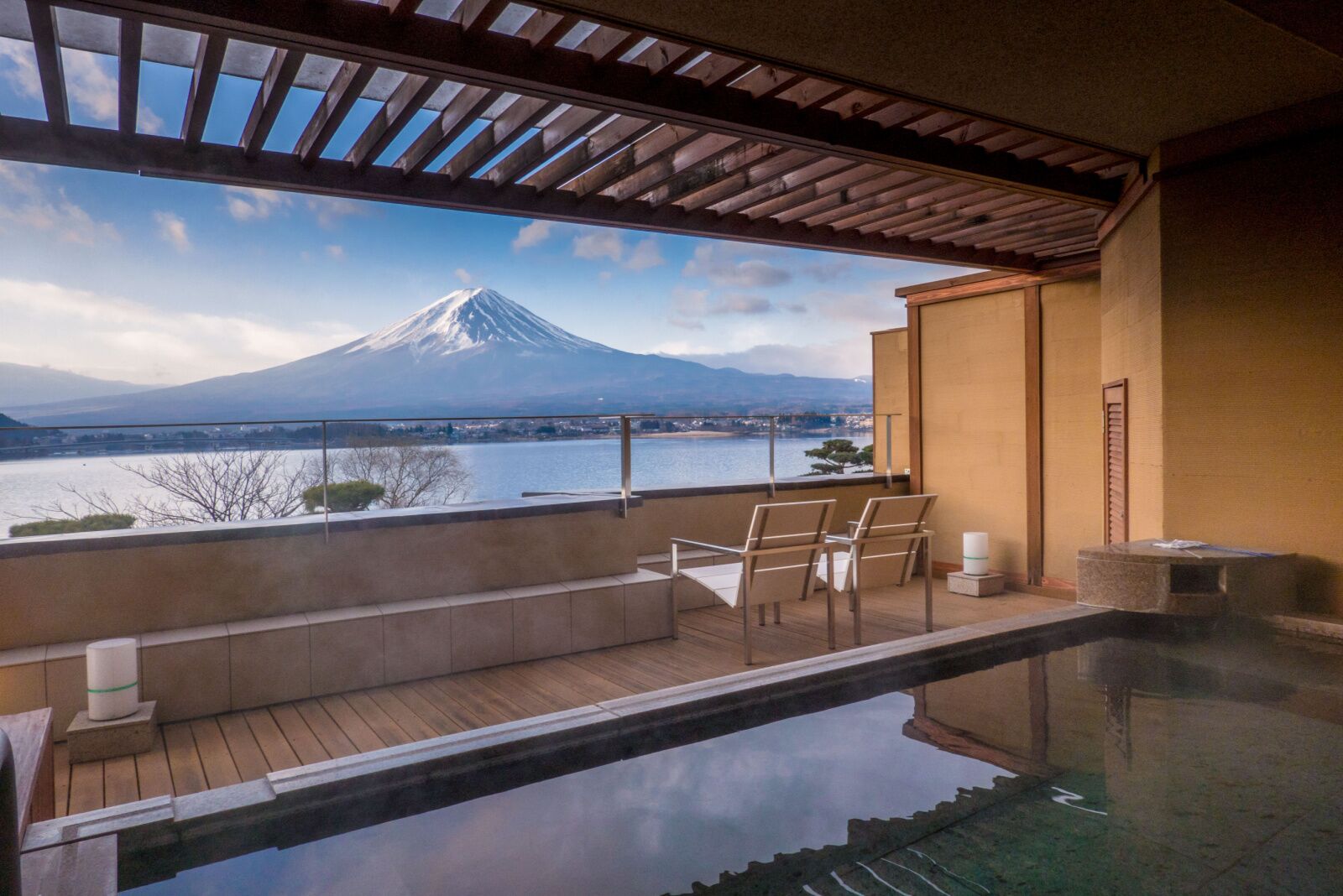
An onsen (hot spring) at a traditional ryokan near Mount Fuji. Photo: zmkstudio/Shuterstock
There are several towns around Mount Fuji in Japan, all of which provide easy access to both the mountain itself and other activities, trails, and regions in the area. There’s not really one “best” town to stay in around Mount Fuji in Japan. It’s more about what you want to do, what kind of other nearby amenities you want, and how much you’re willing to spend on hotels — the further away you go from Mount Fuji during cherry blossom season, the slightly cheaper the hotel rooms get.
All the towns near Mount Fuji have ryokans (traditional Japanese-style inns), as well as more western-style hotels. Note that it’s fairly common for hotels to not have their own webpages in Japan and instead sell rooms through booking websites or agencies only. So don’t worry if a listing looks “unprofessional” by US standards. You always want to do your due diligence with booking lodging, but direct online booking just isn’t quite as common in Japan as it is in other destinations.
We hope you love the spaces and stays we recommend! Just so you know, Matador may collect a small commission from the links on this page if you decide to book a stay. Listed prices are accurate as of the time of publication.
Oike Hotel, Fujikawaguchiko
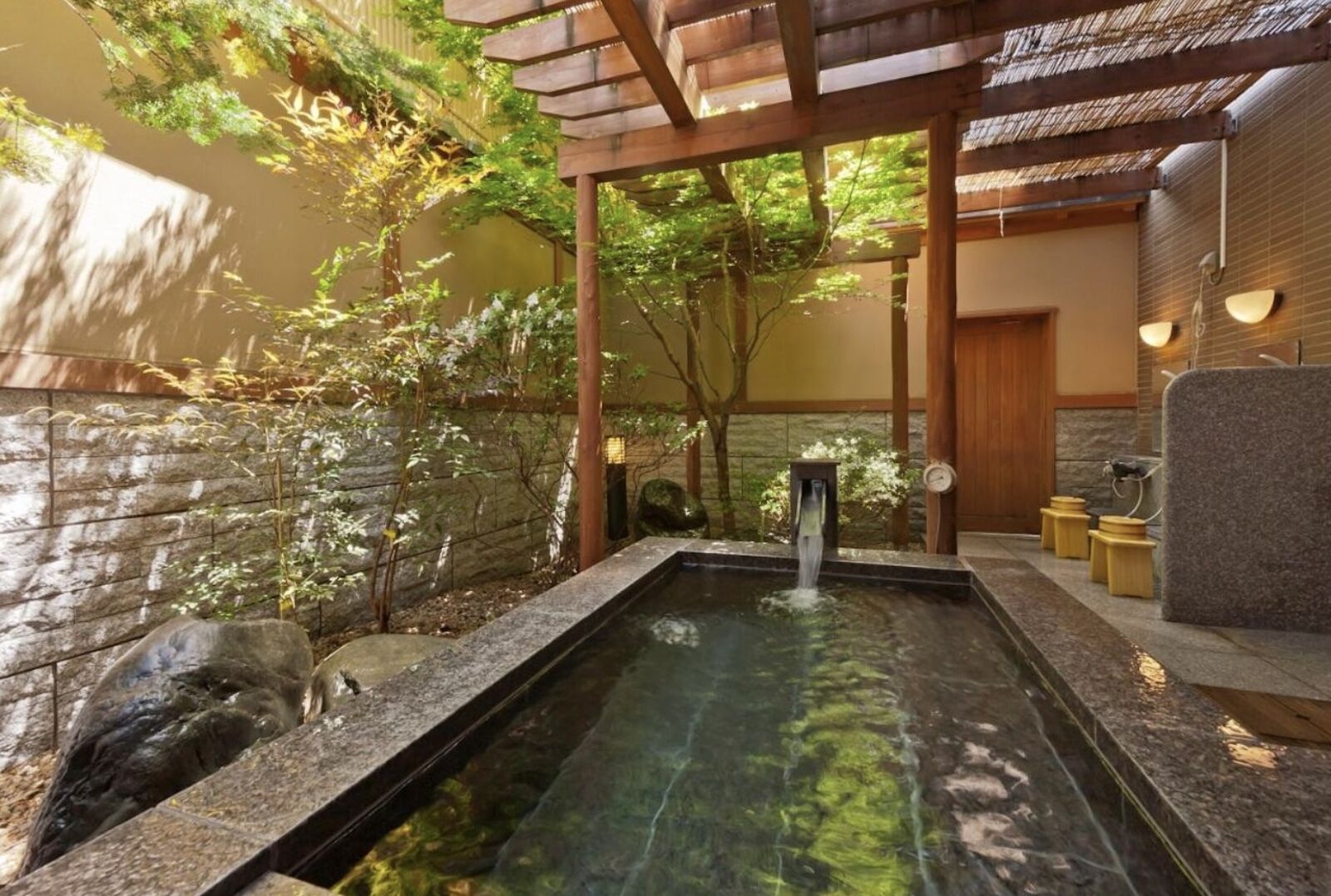
Photo: Booking.com
Fujikawaguchiko is the most convenient town to reach as its where all the buses and trains from Tokyo stop. It’s also near Lake Kawaguchiko (the largest of the five lakes around Mount Fuji) and closest to the Mount Fuji Panoramic Ropeway. And Oike Hoitel is a relatively budget-friendly traditional ryokan just five minutes from the train station, with pick up from Kawaguchi station included in reservations. There are indoor and outdoor hot springs, as well as onsen you can reserve for private use. The least expensive rooms are the western-style ones on the lower floors, but if you can swing it, opt for a higher Japanese-style room (with tatami floor mats), as you’re more likely to have views of Mount Fuji.
Fujiyoshida Airbnb
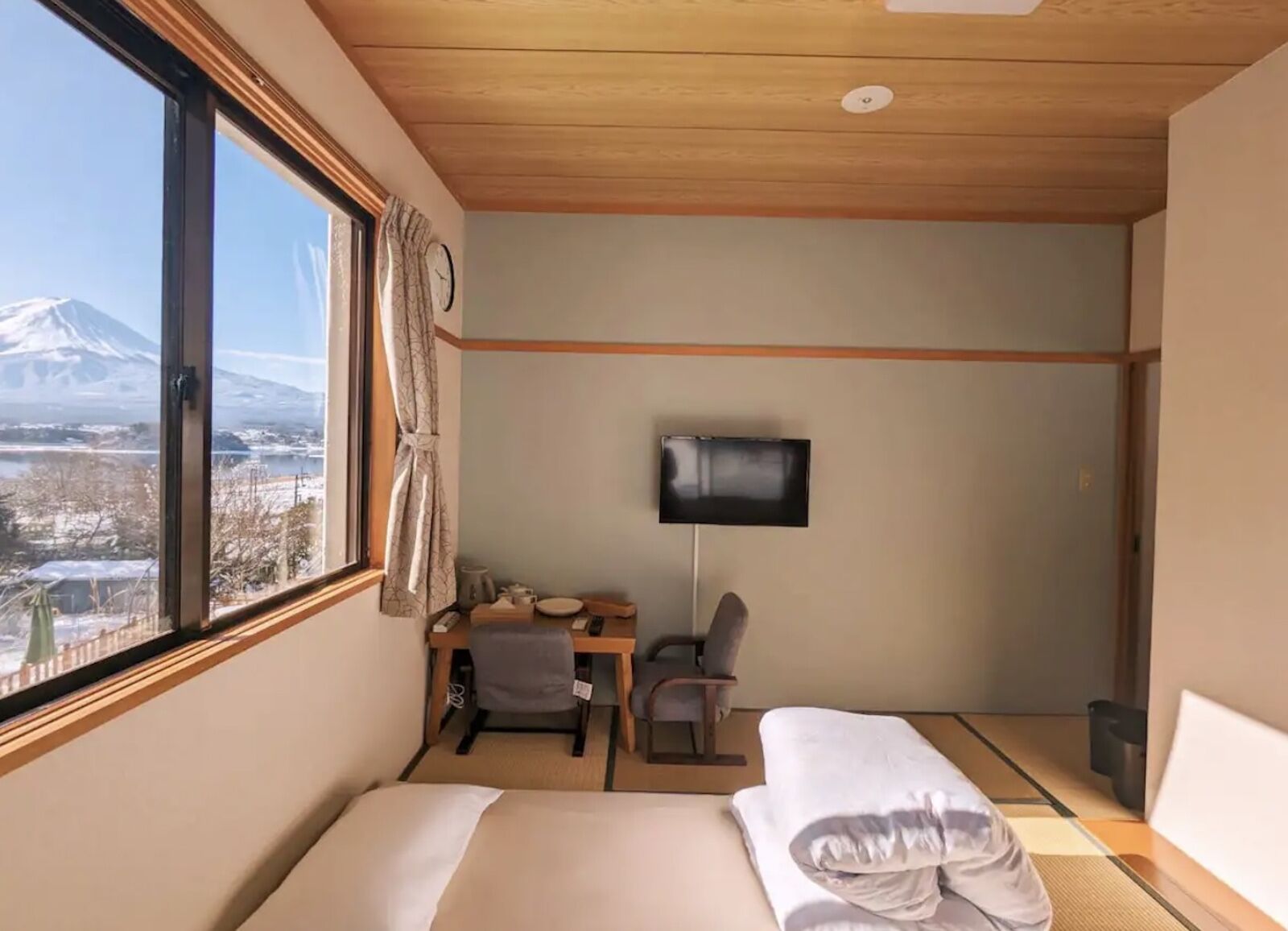
Photo: Airbnb
Fujiyoshida is where you’ll find the 5th Station, which is the starting point for most hikers heading up Mount Fuji. So this may be a good pick for somewhere to stay before or after your hike. It’s a room in a small hotel just about a five-minute walk from cafes and Dashi/Oishi Park. It’s also a very quick walk to Lake Kawaguchi, making it a good pick for summer trips. This particular Airbnb near Mount Fuji, Japan, has an indoor onsen and lots of usable outdoor space.
100-year-old private home
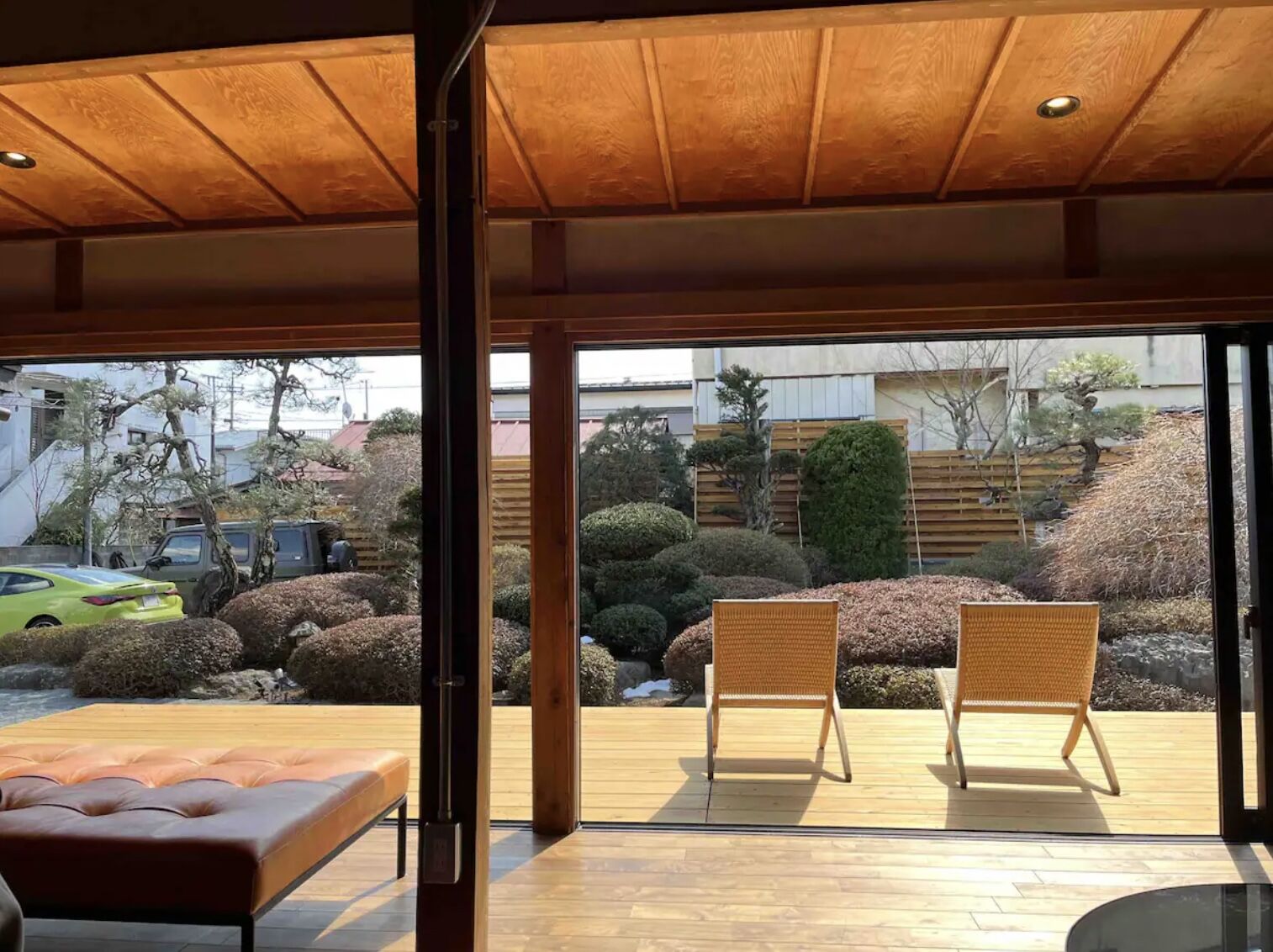
Photo: Airbnb
If you’re with a larger group, consider booking this historic renovated home. It’s gorgeous and walkable to Lake Kawaguchiko, with options to add on the use of a Finnish sauna or daily breakfast and dinners. There’s a pretty outdoor space, too. It can sleep up to 13, but with only one bathroom, you may want to keep the guest list a little smaller.
Fuji Time-traveler Tamatebako Airbnb
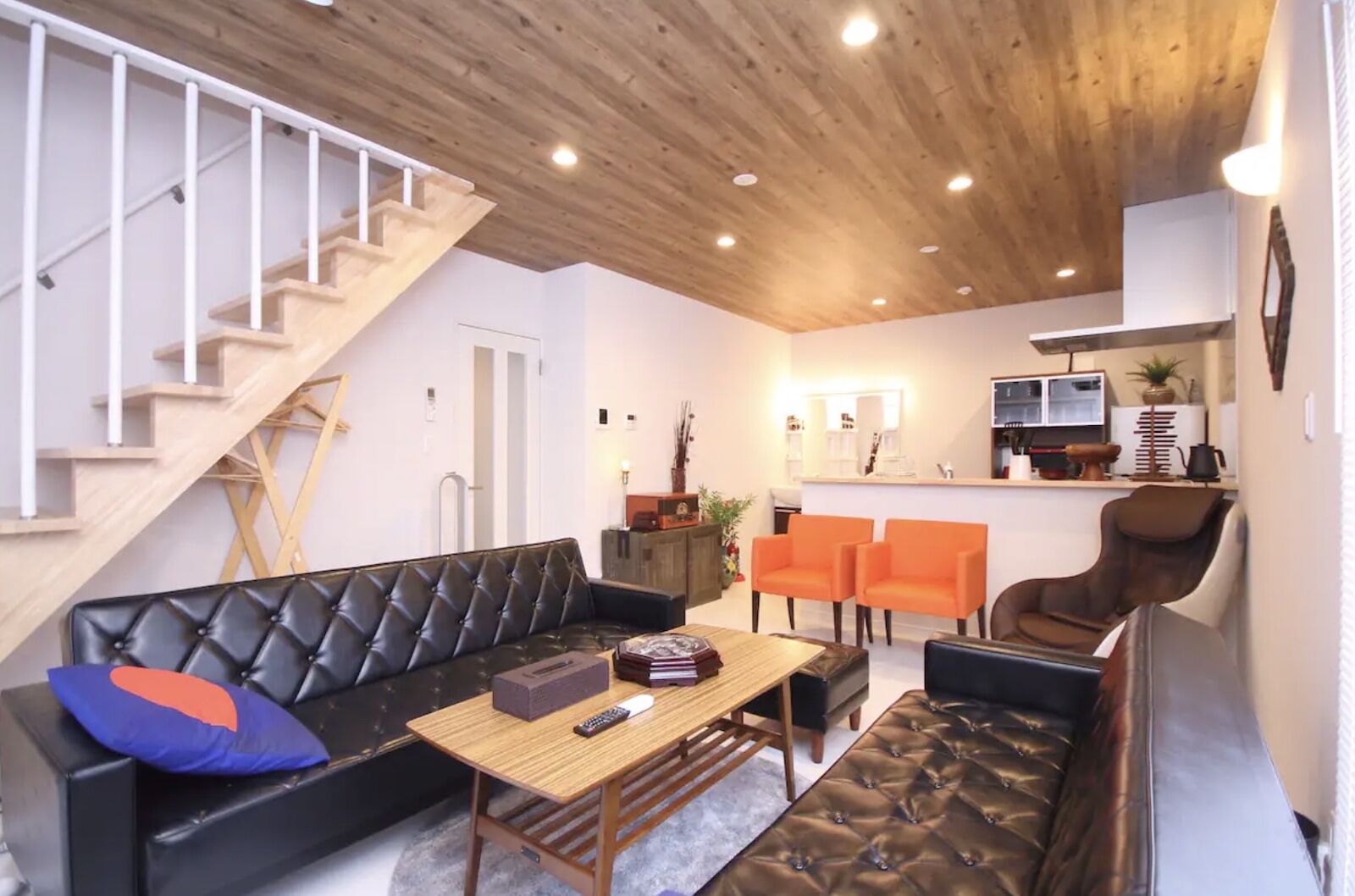
Photo: Airbnb
This newly built Airbnb is only three minutes from Kawaguchiko Station and walkable to the Fuji Ropeway, making it a great pick for travelers arriving from Tokyo or Kyoto without a car. It’s mostly modern, though it has two Japanese-style lounge rooms and a few pieces of “old furniture from the early Showa period.” There’s a sauna you can use for a modest additional fee, too.